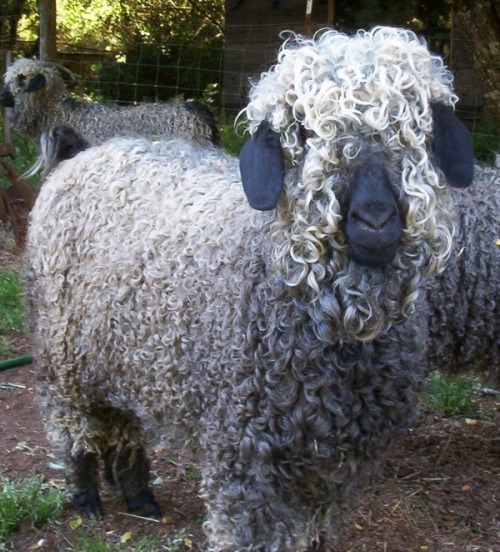When you think of mohair, you might think of crisp, vibrant worsted fabrics like Dormeuil’s Tonik blend made famous by Michael Caine in Get Carter, or the Smith’s version often used for tuxedos. That’s certainly a part of mohair’s identity - its stiffness prevents wrinkles and allows trousers to hold on to a crease like Wilson Phillips holds on to their fifteen minutes of fame (they’re still going!). In an open weave, mohair blends wear cool, which is why it’s often worn in summer.
But there’s a whole different side of mohair, which reveals itself in knits and brushed fabrics. It retains its luster, but instead of feeling crisp and dry, it’s fuzzy and warm.
Mohair comes from angora goats like this guy here:

You’ll almost never see anything in 100% mohair, for a couple of reasons. First, it would be extremely expensive. Of course, that wouldn’t stop everyone - somebody is out there buying all the vicuña - but those ultra-luxury customers tend to prefer fabrics that feel soft. 100% mohair is instead quite brittle - so much so that it sometimes cracks when made up as a suit. A 100% mohair sweater would likewise be very itchy.
That’s why you’ll find mohair most often in blends. The crisp worsteds are usually blended with wool, with anywhere from 5 to 60% mohair. The two mohair-blend fabrics shown above - one a Camoshita overcoat, the other a Stephan Schneider scarf - are the brushed, fuzzy kind. They both have a little bit of mohair (17% and 9%, respectively), mixed with a lot of wool (about 75%), with the rest filled out by alpaca, nylon, and cashmere. The mohair brings a richness of color that wool can’t match.
There aren’t many other fibers that can bring that much depth to a cloth - silk, maybe. But silk in knits usually has a cool, slinky feel. Mohair isn’t used very often, but there’s really nothing that could replace it.